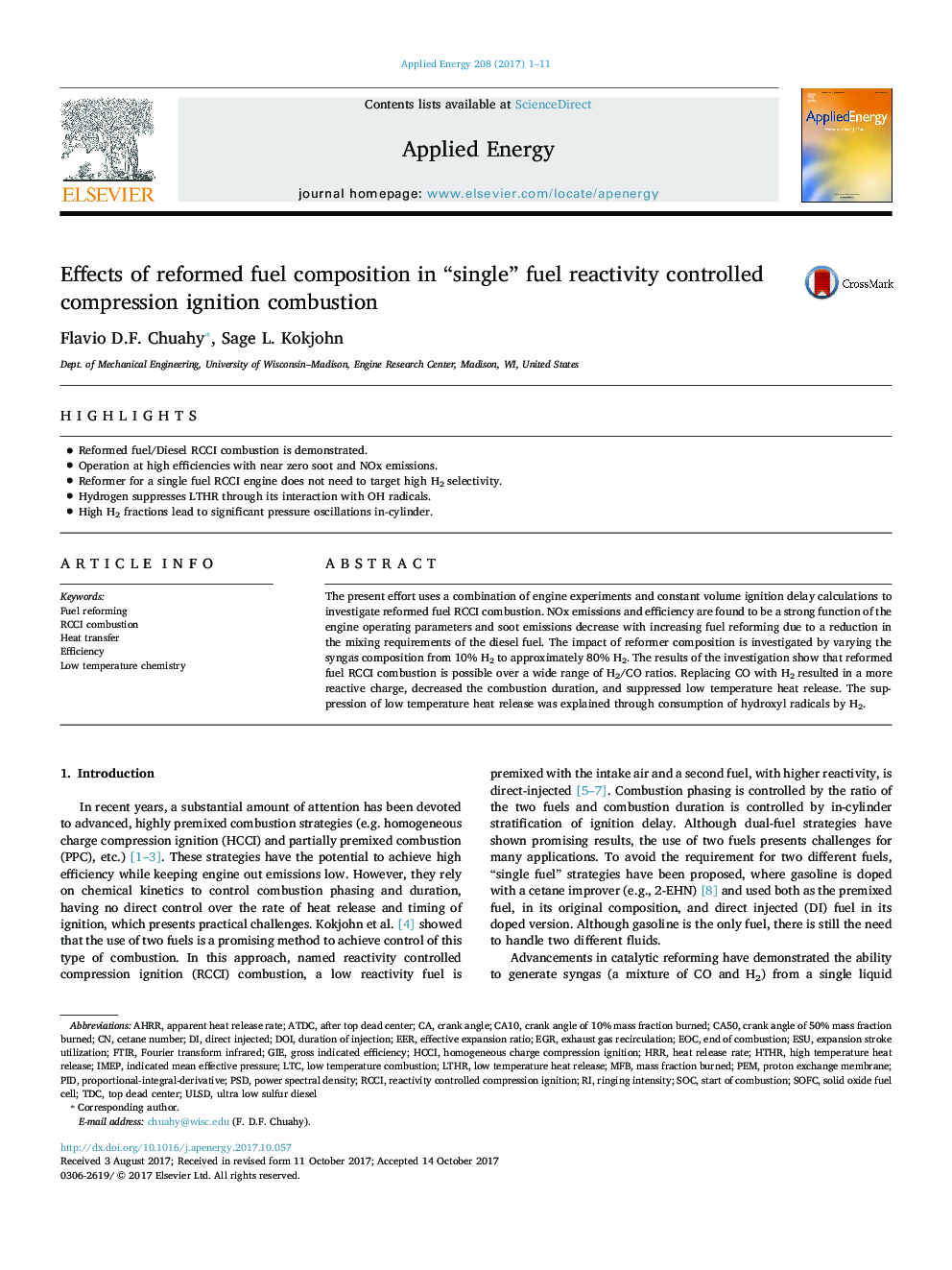| Article ID | Journal | Published Year | Pages | File Type |
|---|---|---|---|---|
| 6681605 | Applied Energy | 2017 | 11 Pages |
Abstract
The present effort uses a combination of engine experiments and constant volume ignition delay calculations to investigate reformed fuel RCCI combustion. NOx emissions and efficiency are found to be a strong function of the engine operating parameters and soot emissions decrease with increasing fuel reforming due to a reduction in the mixing requirements of the diesel fuel. The impact of reformer composition is investigated by varying the syngas composition from 10% H2 to approximately 80% H2. The results of the investigation show that reformed fuel RCCI combustion is possible over a wide range of H2/CO ratios. Replacing CO with H2 resulted in a more reactive charge, decreased the combustion duration, and suppressed low temperature heat release. The suppression of low temperature heat release was explained through consumption of hydroxyl radicals by H2.
Keywords
RCCIEOCMFBDOIPSDPIDPEMIMEPHTHRHRRRinging intensityCA50AHRRLTCULSDLTHRGIEEGRHCCICA10gross indicated efficiencyTDCaTDCSOFCduration of injectionEERReactivity controlled compression ignitionLow temperature combustionFuel reformingLow temperature heat releaseHeat transferEfficiencyafter top dead centerFourier transform infraredPower spectral densityCetane numberUltra low sulfur dieselCrank Angleapparent heat release ratesolid oxide fuel cellHomogeneous Charge Compression IgnitionSOCStart of combustionLow temperature chemistryFTIRProton exchange membraneproportional-integral-derivativetop dead centerEsuHeat release rateIndicated mean effective pressureend of combustionMass fraction burnedexhaust gas recirculationHigh temperature heat release
Related Topics
Physical Sciences and Engineering
Energy
Energy Engineering and Power Technology
Authors
Flavio D.F. Chuahy, Sage L. Kokjohn,
